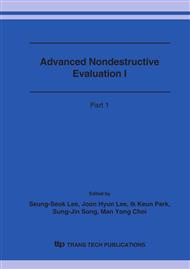p.1461
p.1465
p.1470
p.1475
p.1479
p.1483
p.1487
p.1491
p.1495
The Influence of Microstructure and Chemical Composition on the Strength of Cast Iron Used for Railway Vehicles
Abstract:
Generally, the shape of graphite and the contents of elements strongly affect the tensile strength of cast iron. In this study, hardness tests and tensile tests for the two types of gray cast iron were carried out. The test results showed the similarity in the hardness but considerable difference in the tensile strength between two materials. Microstructure analysis and chemical analysis were conducted to determine the cause for the difference in the tensile strength between the two types of cast iron. The experimental results showed differences in the microstructure and chemical composition between the two materials. B-type brake disk material(B-type) that had higher tensile strength includes flake, vermicular and spheroidal graphite, whereas A-type brake disk material (A-type) included only flake graphite in the structure. Nodularity of graphite in the B-type was higher than that in the A-type. Also, the B-type had the higher Si content and lower Mn content. In addition, the B-type had Cu, while the A-type did not. Therefore, we concluded that the difference in the strength between the two types of cast iron was due to the difference in the shape of the graphite and the contents of Cu in the cast irons.
Info:
Periodical:
Pages:
1479-1482
Citation:
Online since:
October 2006
Authors:
Keywords:
Price:
Сopyright:
© 2006 Trans Tech Publications Ltd. All Rights Reserved
Share:
Citation:


